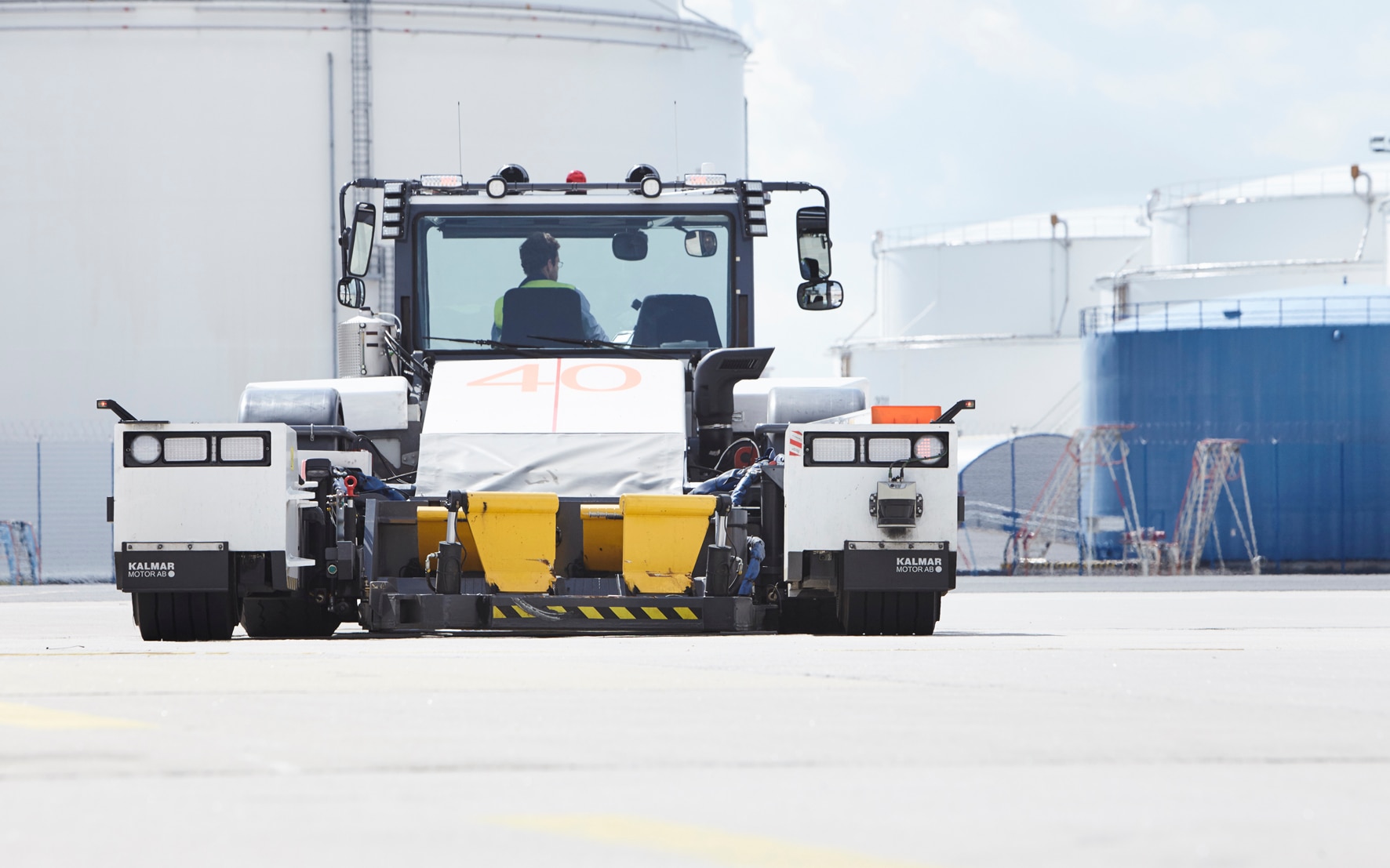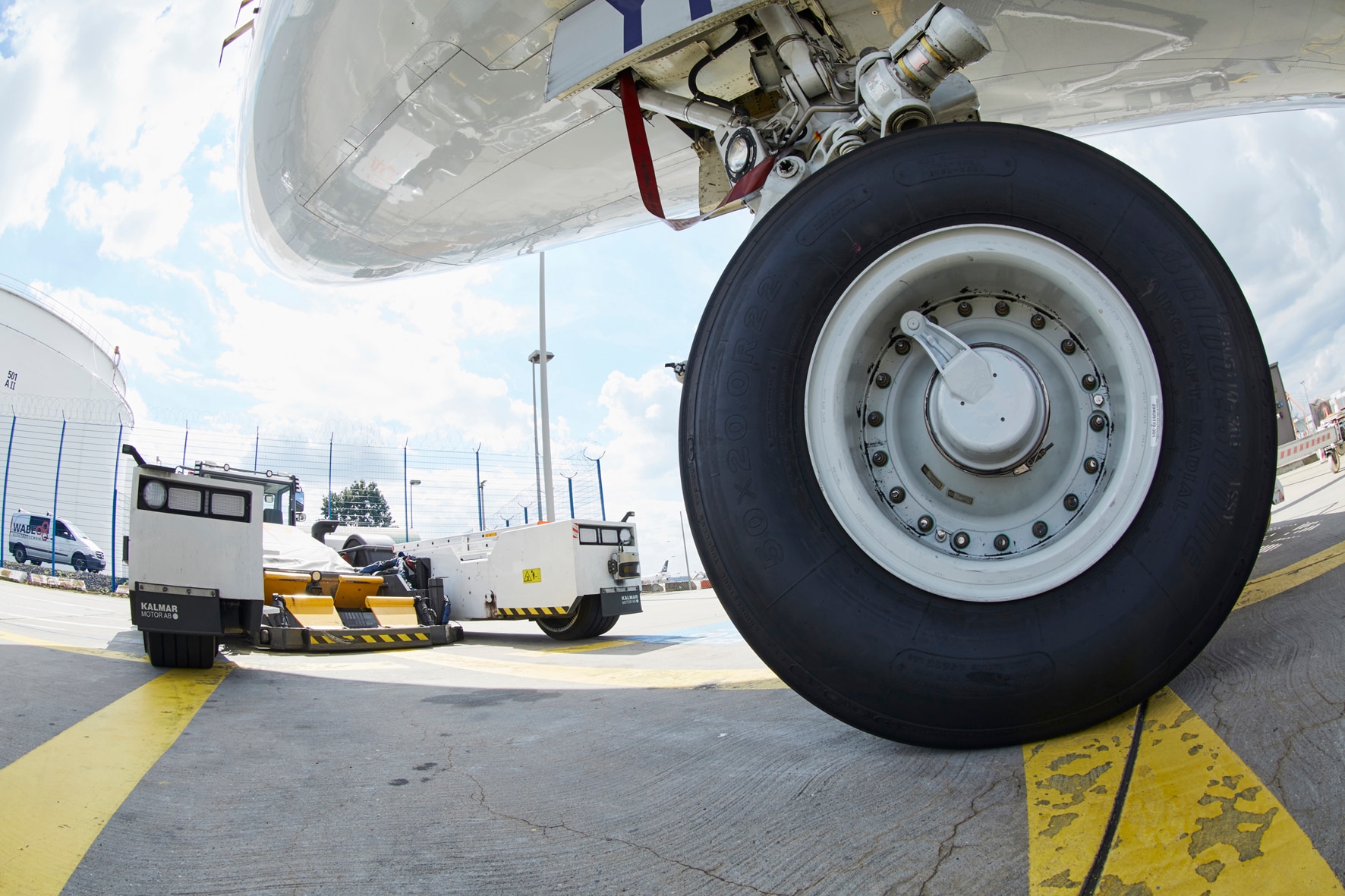Multimillion-dollar damage that occurs during aircraft ground handling leads to high insurance payouts every year. As a result, ground handling services are encumbered with higher insurance premiums.
In order to avoid damage, Lufthansa LEOS GmbH relies on SICK’s experience in laser scanners when tugging aircrafts and is putting the APS driver assistance system from SICK to the test for its aircraft tractor fleet.
At sites in Frankfurt and Munich, LEOS operates a fleet totaling 38 aircraft tractors. Each aircraft tractor deals with an average of eight to15 tugs or pushbacks a day. During these maneuvers, collisions with objects on the runway or in the hangar, or even with other aircrafts are possible.
.

Collision awareness and driver assistance for aircraft tractors
In collaboration with LEOS, SICK has developed the APS (aircraft protection system) driver assistance system to help aircraft tractor drivers to move aircrafts safely. This takes some of the strain off the drivers and reduces the risk of collisions and accidents, thereby avoiding high repair, maintenance, and aircraft downtime costs. In brief, using the APS facilitates smooth and efficient pushback, maintenance, and maneuver towing procedures.
Determining the aircraft type
The aircraft tractor without tow bars grips the nose wheel and lifts it up. The nose wheel and its weight then rest on the center of the tractor and the tractor driver assumes control of the aircraft. The LMS511 2D laser scanner is mounted on the tractor facing backward and scans the entire area under the aircraft parallel to the ground. “The laser scanner detects the wheels of the main landing gear of the aircraft; the APS driver assistance system then determines the aircraft type using the landing gear geometry. The APS features a database where the various aircraft types are stored and suggests all possible aircraft types that match the corresponding landing gear geometry to the aircraft tractor driver by a selection list on the display. The driver selects the correct aircraft and confirms the selection,” explains Michael Doll, Project Engineer for Lufthansa LEOS GmbH.
Invisible carpet under the aircraft
The APS driver assistance system monitors the towing corridor, shows drivers any obstacles, and warns them of possible collisions in good time. The system comprises an LMS511 2D laser scanner and a touch display with an integrated processing unit including application software. The integrated installation wizard makes it easy to commission and configure the APS. “The laser scanner detects virtually everything that is underneath, to the left of, to the right of, or behind the aircraft. The warning zones can be individually defined. The scanning area lies underneath the aircraft like an invisible carpet,” says Thomas Killmaier, COO of Lufthansa LEOS GmbH, explaining the principle. “Everything intruding into this area – the driving path of the aircraft – is marked on the display in red. The driver is informed in accordance with a defined warning strategy and sees that there may be a collision between the aircraft and an object.”

Moving aircrafts presents great challenges for an aircraft tractor driver. Aircrafts can be pushed or pulled, but doing so may block the driver’s view in some circumstances. And then there are the weather-related obstacles, as aircrafts need to be moved in all weathers. “The task of an aircraft tractor driver is very complex. They have plenty of other tasks to complete. The driver assistance system provides support, but never intervenes. Drivers see immediately that the system works and that the sensors detect every object. They have to be able to say ‘It’s helped me today.’ However, it has to be manageable for the driver,” comments Michael Doll. SICK developers are working with the aircraft tractor drivers to configure the optimum acoustic warning frequency so that driver and driver assistance complement each other perfectly.
Besides in airport operations, SICK sensors are also successfully used in a wide range of applications, such as outdoors, for collision avoidance purposes. For example, laser scanners from SICK ensure the collision-free operation of cranes and containers in container terminals across the world.
Lufthansa LEOS (Lufthansa Engineering and Operational Services GmbH) is a wholly owned subsidiary of Lufthansa Technik AG which specializes in ground handling services at major German airports. LEOS’s core competences primarily include tugging aircrafts, crew transports, and maintaining devices and vehicles from the ground handling sector.


